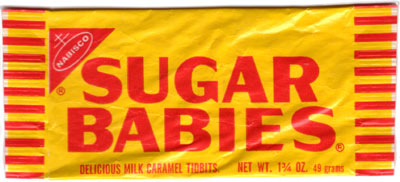Sometimes, we hear at NLGJA that our colleagues at GLAAD do all the same stuff we do and therefore maybe we should let the big guys just do the work of monitoring the news. Our argument is that while GLAAD is an activist group focused on how the LGBT world is depicted in the media, NLGJA is focused on fair and accurate coverage in the news media and that there is an important difference.
 One example of how the two groups may differ is when journalists let LGBT people depict themselves poorly in the media or journalists run stories that don’t reflect positively on the gays.
One example of how the two groups may differ is when journalists let LGBT people depict themselves poorly in the media or journalists run stories that don’t reflect positively on the gays.
Yesterday, GLAAD chastised Huffington Post for a story about gay men who are paying their way through college (and life) by taking on Sugar Daddies. It’s one of those late summer trend stories that’s interesting in a train-wreck kind of way because it introduces you to terms like “sugar babies” and parties where nubile young people go to parties to meet sugar daddies who will pay for their apartments, baubles, and iPhones. GLAAD’s objection was that it made gay folks like pretty shallow, allowing “sugar babies” to admit they need the money to keep up with the gay community’s pressure to be materialistic and there’s no real stigma against being an escort in the gay world.
These are not phrases that should appear in any piece of responsible journalism (that’s not debunking them as myths) let alone one published by an outlet that frequently publishes positive and affirming stories about the true diversity of the LGBT community. But this article doesn’t stop at just presenting the “gay scene” as a single-minded monolith – it also claims that this gay monolith supports prostitution.
Let us be clear.
These are the false stereotypes put forth by the staunchest opponents of marriage equality. These are the false stereotypes that were used as rationalization for “Don’t Ask, Don’t Tell” and they’re the false stereotypes that anti-gay activists used to fight against its repeal. These are the false stereotypes responsible for the bans on domestic partnership and civil union recognition. These are the false stereotypes put forth as reasons why gay and lesbian couples shouldn’t be allowed to adopt children.
In response, HuffPost said:
Our coverage of students who sell themselves to manage their college debt has aimed to be sympathetic to their plight — not sensationalistic. But based on our reporting, we found that young women and young gays are part of communities that often view the matter differently. We found that for many gay men, the use of escort services and the exchange of money for sex appear to carry less of a stigma, according to extensive interviews with gay escorts and members of the gay community.
So was it bad journalism? If the reporter had said gays are shallow and materialistic and idealize prostitutes, then there would be a giant red flag. But Amanda Fairbanks didn’t say that. She let one of the “sugar babies” say that himself. Assuming she didn’t put words in his mouth, she did what journalists should do: let the sources speak for themselves. The fact that she found people who said things that may make the “gay community” look bad and perpetuate stereotypes that play into the hands of people who opposed LGBT rights isn’t her fault.
Sure, she went with the best quotes. And maybe there are “sugar babies” out there who are more profound and circumspect about what they are doing and less flippant about the gold-digging. But that doesn’t mean it’s necessarily bad journalism. Good journalism about LGBT lives needs to show those lives, warts (and shallow hookers) and all.
But what do you think?
